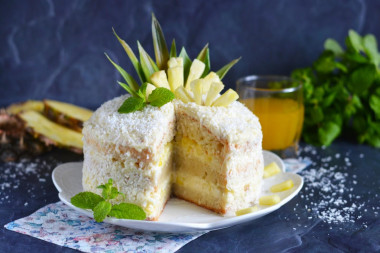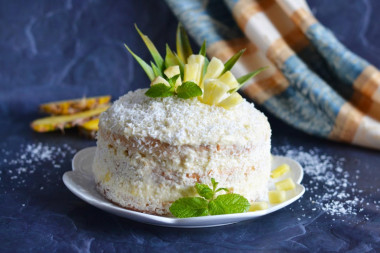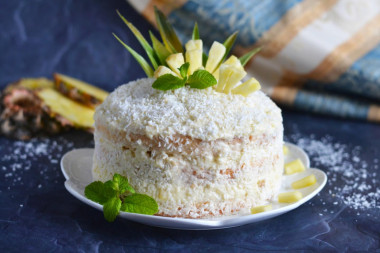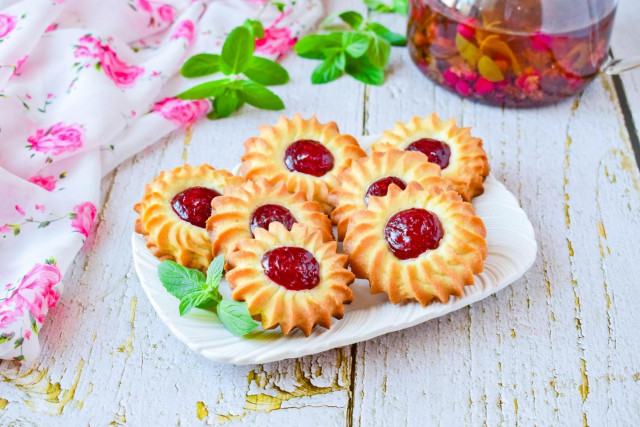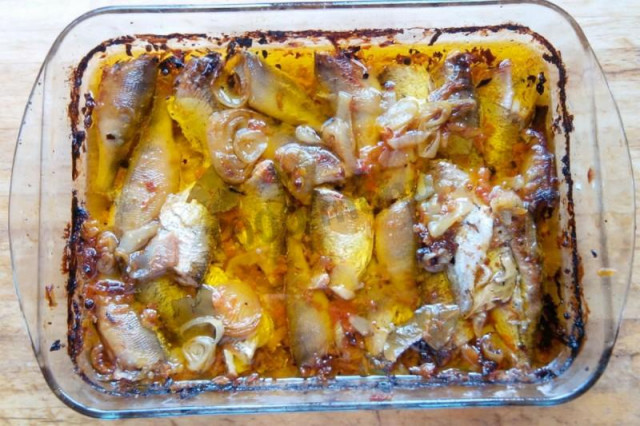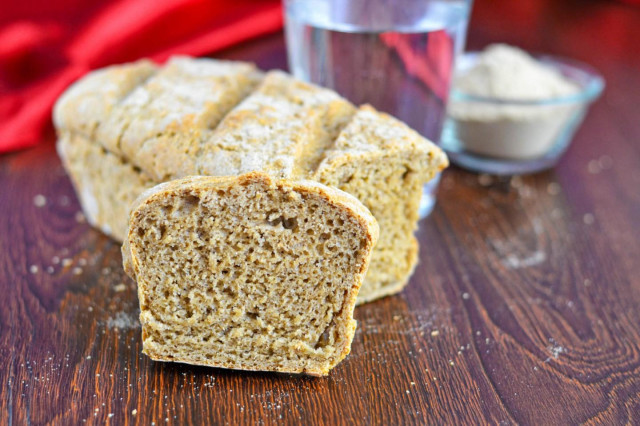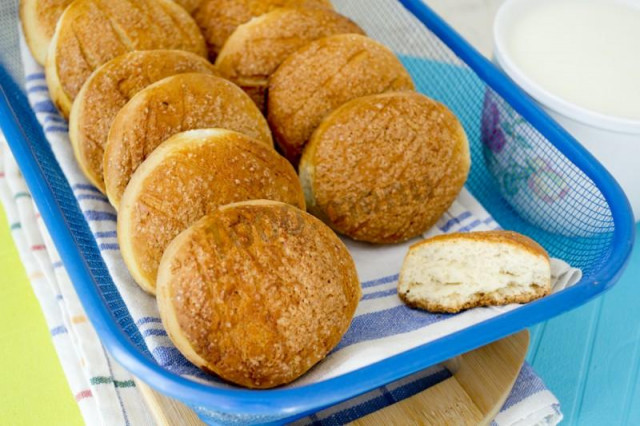Composition / ingredients
Step-by-step cooking
Step 1:
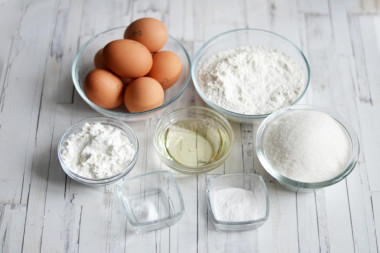
How to make a Pina Colada cake? Prepare the necessary ingredients for the dough and cakes. Eggs should be at room temperature, so take them out of the refrigerator in advance.
Step 2:
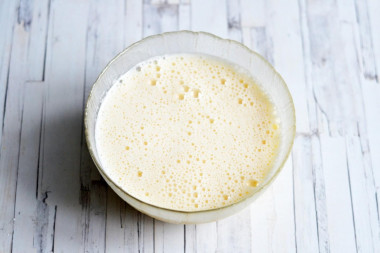
Beat eggs with sugar into a fluffy stable light foam. Just do not over-beat the eggs, otherwise the biscuit will not rise and will not be lush. There should be a lot of small bubbles on the surface.
Step 3:
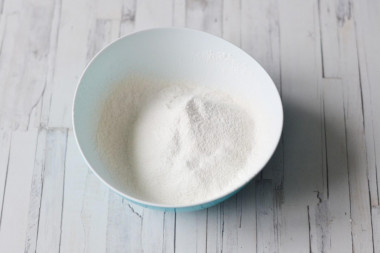
Sift the flour with baking powder and vanilla and starch and mix.
Step 4:
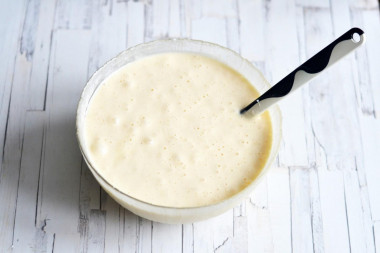
Gradually add the flour mixture into the beaten eggs, gently stirring the mass with a spatula from top to bottom, trying not to precipitate the dough. Pour in the vegetable oil and mix the dough thoroughly with a spatula.
Step 5:
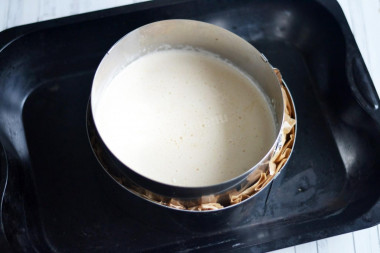
Wrap the cooking ring with a diameter of 18-20 cm tightly with foil so that the dough does not leak from below and put it on a baking sheet. If there is a split form, it is better to use it. Pour the dough into the mold.
Step 6:
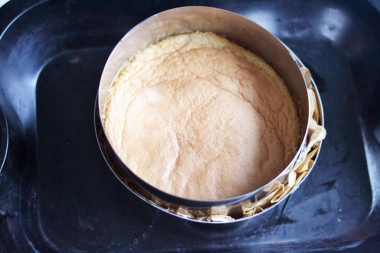
Bake the sponge cake in preheated to 170°With the oven for about 40 minutes (or longer - focus on your oven). Do not open the door for the first 25-30 minutes, otherwise the biscuit will settle. Check readiness with a skewer – it should come out dry.
Step 7:
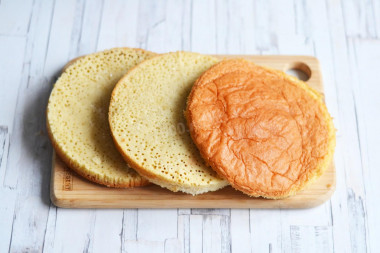
Cool the finished biscuit to room temperature. Cut the cooled biscuit lengthwise into 3 cakes (or 4 if the height allows).
Step 8:
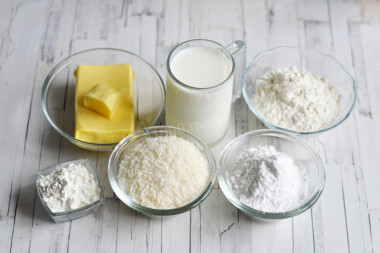
While the biscuit is baking, prepare the cream. The butter should be at room temperature, so take it out of the refrigerator in advance.
Step 9:
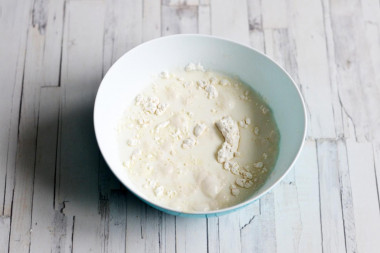
Pour starch and flour into 250 ml of cold milk.
Step 10:
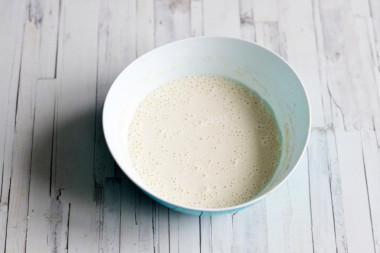
Mix thoroughly so that there is not a single lump.
Step 11:
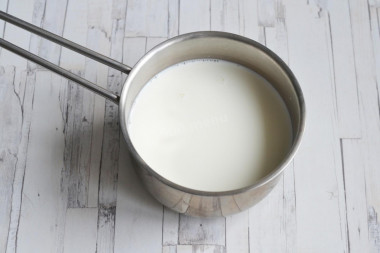
Bring the remaining milk (250 ml) to a boil over medium heat, but do not boil.
Step 12:
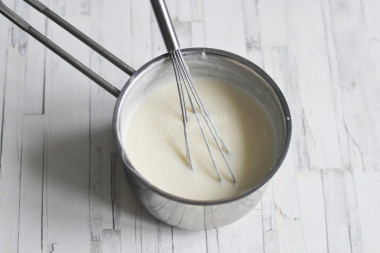
Pour in the milk-starch mixture in a thin stream, stirring. Cook the cream with constant stirring for 5-10 minutes until thickened. If possible, boil the cream until it becomes very thick and the trace from the whisk stops tightening.
Step 13:
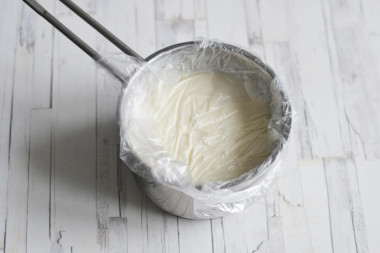
Cover the finished cream with a film or a package "in contact" and cool.
Step 14:
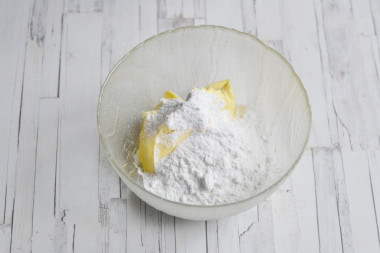
Beat soft butter with powdered sugar.
Step 15:
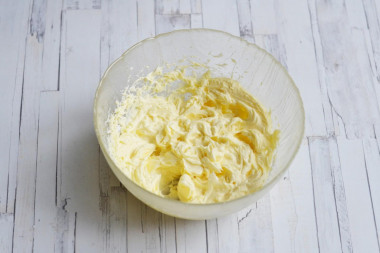
Gradually mix the cooled milk cream into the oil mixture. ! Check if the cream has cooled down well. If it stays warm or hot at the bottom, it will melt the butter and the whole cream will be spoiled. Therefore, milk cream should be either colder than butter, or the same temperature with it.
Step 16:
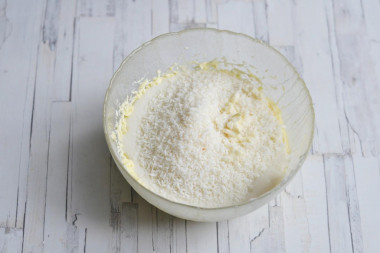
Pour coconut chips into the cream.
Step 17:
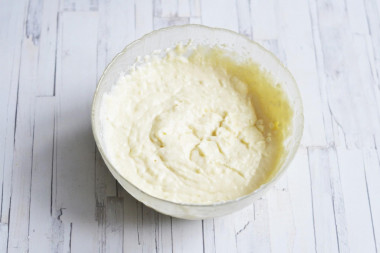
Mix the cream thoroughly. It should be dense, not fluid. It is better before spreading the cream on the cakes, put it in the refrigerator for 1 hour.
Step 18:
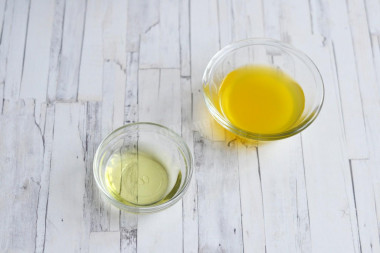
For impregnation, take pineapple juice and alcoholic liqueur. It is advisable to use coconut or pineapple liqueur, but if none of this is available, limoncello is also suitable. If you use canned pineapples in syrup for the filling, then you can take this syrup for impregnation.
Step 19:
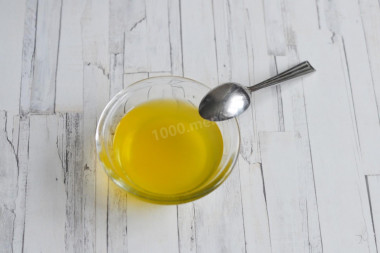
Mix pineapple juice with liqueur (I have limoncello).
Step 20:
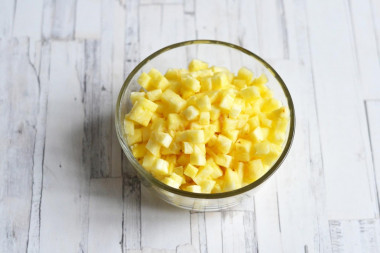
You can use canned pineapples for the filling. I decided that it would be tastier with fresh fruit. And it really turned out tastier, the main thing is to choose a ripe fragrant pineapple. Cut the pineapple pulp into small pieces. Canned fruits need to be slightly squeezed out of excess moisture, and then cut into pieces.
Step 21:
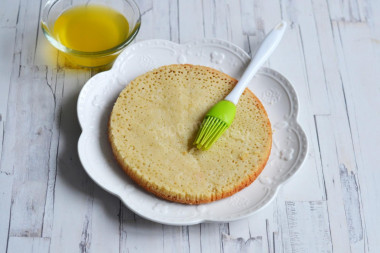
Assemble the cake. Put the first cake on a plate and soak it with a mixture of juice and liqueur.
Step 22:
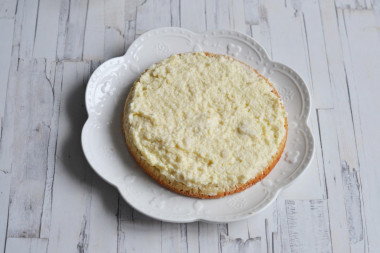
Then lubricate the cake liberally with cream.
Step 23:
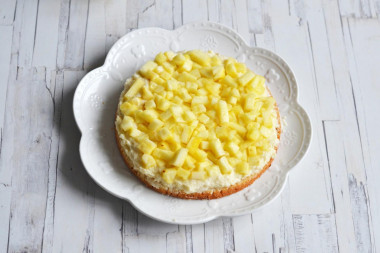
Sprinkle with pineapple slices.
Step 24:
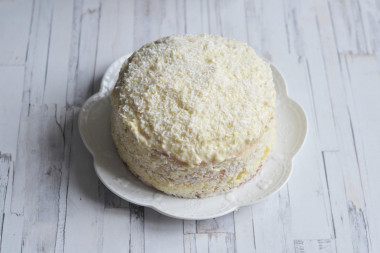
Cover with the next cake and repeat all layers. The last cake just smear with cream and sprinkle with fruit is not necessary. Cover the top and sides of the cake with the remnants of the cream and sprinkle with the remaining coconut chips.
Step 25:
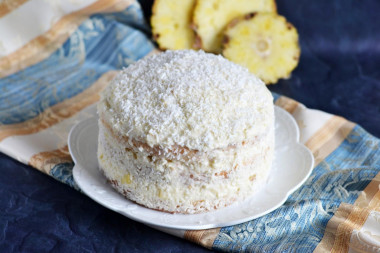
Let the finished cake stand in the refrigerator for 3-4 hours and serve it to the table. Decorate as desired with pineapple slices, rosette leaves and mint. Bon appetit!
Keep in mind that everyone's ovens are different. The temperature and cooking time may differ from those specified in the recipe. To make any baked dish successful, use useful information about the features of ovens !
Be prepared for the fact that flour may need more or less than indicated in the recipe. Focus not on the amount of flour, but on the desired consistency of the dough. To avoid mistakes, read about flour and its properties!
Caloric content of products possible in the composition of the dish
- Whole cow's milk - 68 kcal/100g
- Milk 3.5% fat content - 64 kcal/100g
- Milk 3.2% fat content - 60 kcal/100g
- Milk 1.5% fat content - 47 kcal/100g
- Concentrated milk 7.5% fat content - 140 kcal/100g
- Milk 2.5% fat content - 54 kcal/100g
- Chicken egg - 157 kcal/100g
- Egg white - 45 kcal/100g
- Egg powder - 542 kcal/100g
- Egg yolk - 352 kcal/100g
- Ostrich egg - 118 kcal/100g
- Pineapples - 49 kcal/100g
- Canned pineapples - 57 kcal/100g
- Whole durum wheat flour fortified - 333 kcal/100g
- Whole durum wheat flour, universal - 364 kcal/100g
- Flour krupchatka - 348 kcal/100g
- Flour - 325 kcal/100g
- Granulated sugar - 398 kcal/100g
- Sugar - 398 kcal/100g
- Starch - 320 kcal/100g
- Butter 82% - 734 kcal/100g
- Amateur unsalted butter - 709 kcal/100g
- Unsalted peasant butter - 661 kcal/100g
- Peasant salted butter - 652 kcal/100g
- Melted butter - 869 kcal/100g
- Vegetable oil - 873 kcal/100g
- Cherry liqueur - 299 kcal/100g
- Baileys Liqueur - 327 kcal/100g
- Liquor - 327 kcal/100g
- Coconut chips - 592 kcal/100g
- Vanillin - 288 kcal/100g
- Baking powder dough - 79 kcal/100g
- Powdered sugar - 374 kcal/100g
- Pineapple juice - 48 kcal/100g


